Testament Contexts Methods Ministry Formation Second Edition David A. Desilva
Visit to download the full and correct content document: https://textbookfull.com/product/an-introduction-to-the-new-testament-contexts-metho ds-ministry-formation-second-edition-david-a-desilva/
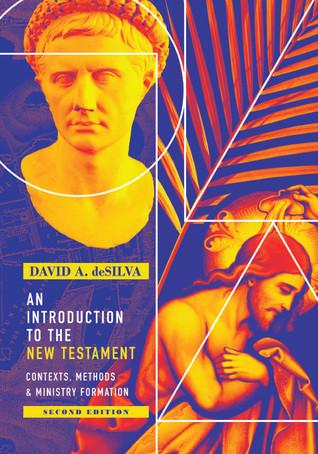
More products digital (pdf, epub, mobi) instant download maybe you interests ...
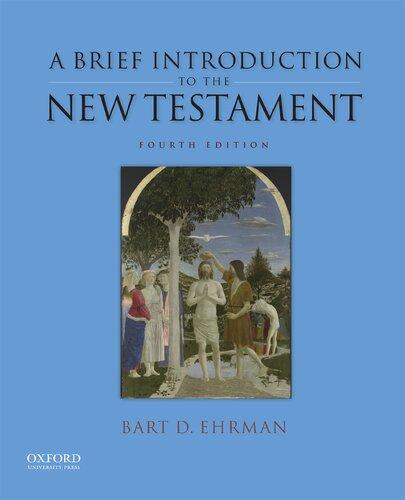
A Brief Introduction to the New Testament Bart D. Ehrman
https://textbookfull.com/product/a-brief-introduction-to-the-newtestament-bart-d-ehrman/
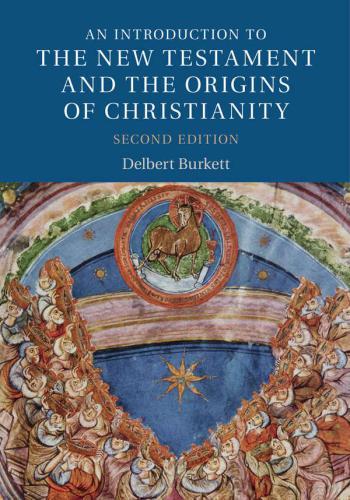
An Introduction to the New Testament and the Origins of Christianity Introduction to Religion 2nd Edition Burkett
https://textbookfull.com/product/an-introduction-to-the-newtestament-and-the-origins-of-christianity-introduction-toreligion-2nd-edition-burkett/
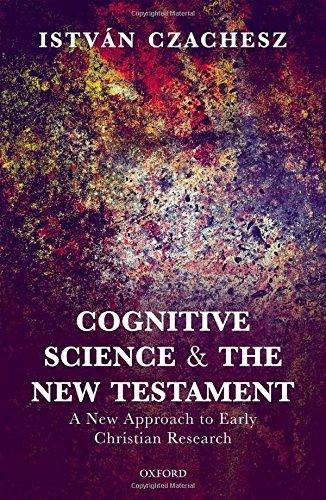
Cognitive science and the New Testament : a new approach to early Christian research First Edition Czachesz
https://textbookfull.com/product/cognitive-science-and-the-newtestament-a-new-approach-to-early-christian-research-firstedition-czachesz/
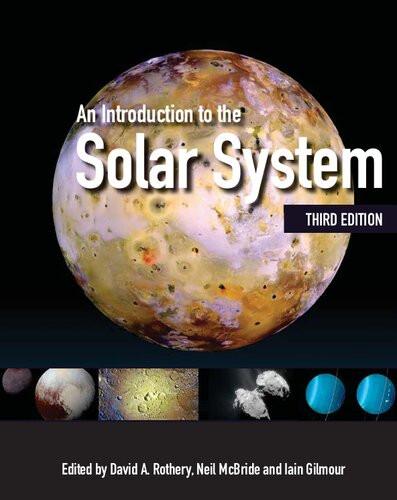
An Introduction to the Solar System 3rd Edition David A. Rothery (Editor)
https://textbookfull.com/product/an-introduction-to-the-solarsystem-3rd-edition-david-a-rothery-editor/
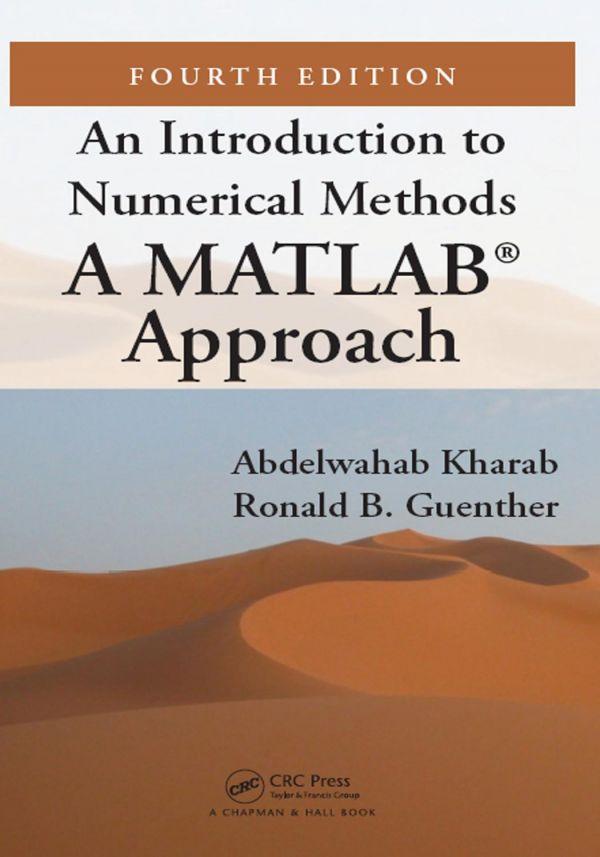
An introduction to numerical methods: a MATLAB approach 4th Edition Guenther
https://textbookfull.com/product/an-introduction-to-numericalmethods-a-matlab-approach-4th-edition-guenther/
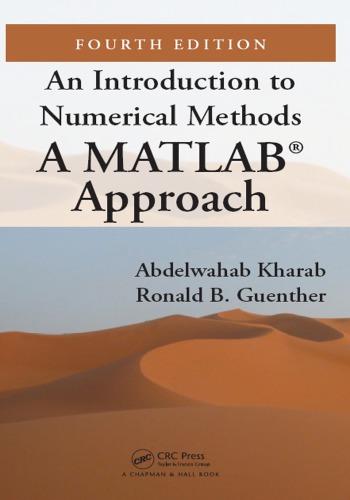
An introduction to numerical methods : a MATLAB® approach Fourth Edition Guenther
https://textbookfull.com/product/an-introduction-to-numericalmethods-a-matlab-approach-fourth-edition-guenther/
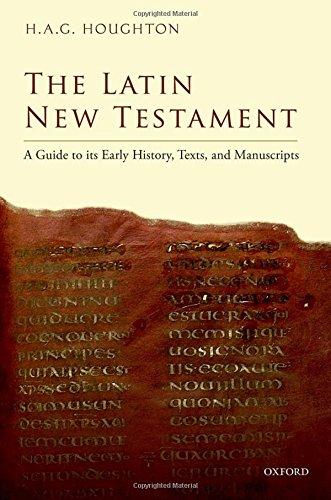
The latin New Testament : a guide to its early history, texts, and manuscripts 1st Edition Houghton
https://textbookfull.com/product/the-latin-new-testament-a-guideto-its-early-history-texts-and-manuscripts-1st-edition-houghton/
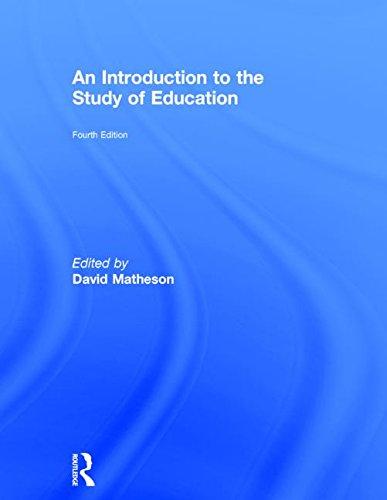
An Introduction to the Study of Education 4th Edition David Matheson
https://textbookfull.com/product/an-introduction-to-the-study-ofeducation-4th-edition-david-matheson/
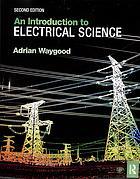
An introduction to electrical science Second Edition Waygood
https://textbookfull.com/product/an-introduction-to-electricalscience-second-edition-waygood/
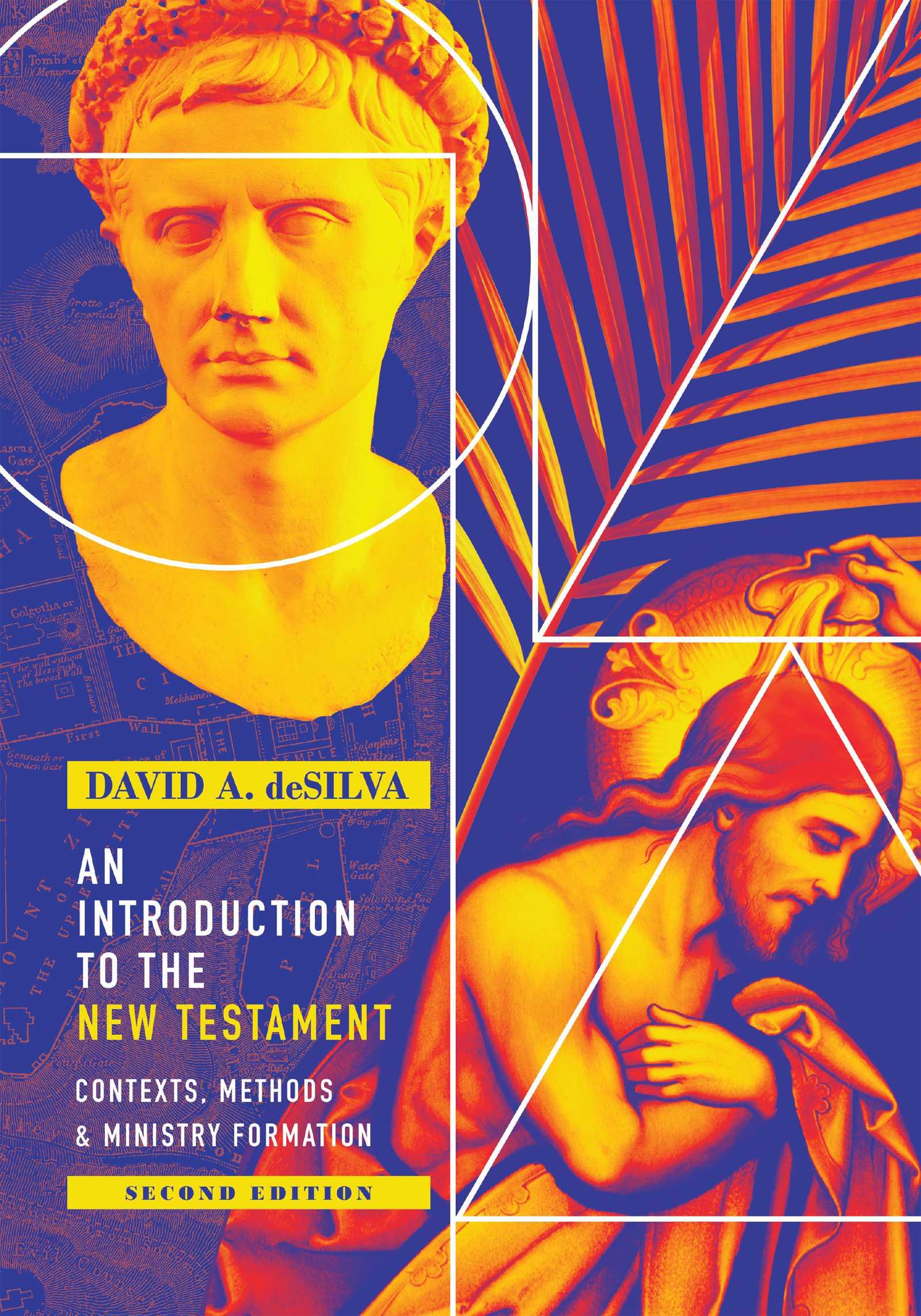

DAVID A. deSILVA AN INTRODUCTION TO THE NEW TESTAMENT
CONTEXTS, METHODS & MINISTRY FORMATION
SECOND EDITION
InterVarsity Press
P.O. Box 1400, Downers Grove, IL 60515-1426
ivpress.com
email@ivpress.com
Second edition ©2018 by David A. deSilva
First edition ©2004 by David A. deSilva
All rights reserved. No part of this book may be reproduced in any form without written permission from InterVarsity Press.
InterVarsity Press® is the book-publishing division of InterVarsity Christian Fellowship/USA®, a movement of students and faculty active on campus at hundreds of universities, colleges, and schools of nursing in the United States of America, and a member movement of the International Fellowship of Evangelical Students. For information about local and regional activities, visit intervarsity.org.
All Scripture quotations, unless otherwise indicated, are the author’s translation. Scripture quotations labeled NRSV are from the New Revised Standard Version of the Bible, copyright 1989 by the Division of Christian Education of the National Council of the Churches of Christ in the USA.
Used by permission. All rights reserved.
Cover design: David Fassett
Interior design: Daniel van Loon and Jeanna Wiggins
Images: stained glass—Holy Spirit: © jimd_stock / iStock / Getty Images Plus early plan of Jerusalem: © duncan1890 / Getty Images
baptism of Jesus, stained glass: © junak / iStock / Getty Images Plus statue of Augustus: © PaoloGaetano / Getty Images green palm branch: © joakimbkk / Getty Images statue of St. Paul: © josefkubes / iStock / Getty Images Plus Roman coin: © Luso / Getty Images
ISBN 978-0-8308-7400-2 (digital)
ISBN 978-0-8308-5217-8 (print)
In honor of my father, J. Arthur F. deSilva, on his eighty-fifth birthday, and in loving memory of my grandfather,
Stephen Frederick deSilva (1902–1981)

When the father dies he will not seem to be dead, for he has left behind him one like himself, whom in his life he looked upon with joy and at death, without grief.
He has left behind him an avenger against his enemies, and one to repay the kindness of his friends.
Ben Sira 30:4-6


LISTS AND ABBREVIATIONS
LIST OF TABLES
ABBREVIATIONS
DEAD SEA SCROLLS
1QS Rule of the Community, Manual of Discipline
11QT Temple Scroll (11Q19)
4QMMT Some Works of the Law (Miqsat Ma’ase HaTorah, 4Q394-399)
4Q521 Messianic Apocalypse
CD Damascus Document/Rule
APOCRYPHA AND PSEUDEPIGRAPHA
Bar Baruch
1 En. 1 Enoch
Jub. Jubilees
Let. Aris. Letter of Aristeas
1-2-3-4 Macc 1-2-3-4 Maccabees
Pss. Sol. Psalms of Solomon
Sir Sirach (Ben Sira)
Tob Tobit
Wis Wisdom
ANCIENT AUTHORS AND SOURCES
Aristotle
Eth. nic. Ethica Nicomachea
Pol. Politica
Rhet. Rhetorica
Cicero
Off. De officiis
Did Didache
Dio Chrysostom
Or. Orationes
Diodorus of Sicily
Bib. Hist. Bibliotheca Historica
Epictetus
Diss. Dissertationes
Ench. Enchiridion
Eusebius
Hist. eccl. Historia ecclesiastica
Ignatius
Ign. Eph. Letter to the Ephesians
Ign. Smyrn. Letter to the Smyrneans
Ign. Magn. Letter to the Magnesians
Irenaeus
Haer. Adversus haereses
Isocrates
Dem. Ad demonicum
Josephus
Ant. Antiquities of the Jews
Ag. Ap. Against Apion Life Life
J.W. Jewish War
Justin Martyr
Dial. Dialogue with Trypho
Juvenal
Sat. Satirae
Philo
Flacc. In Flaccum
Fug. De fuga et inventione
Leg. Legum allegoriae
Legat. Legatio ad Gaium
Spec. De specialibus legibus
Plato
Gorg. Gorgias
Pliny the Younger
Ep. Epistolae
Plutarch
Mor. Moralia
Self-Praise On Inoffensive Self-Praise
Polycarp
Pol. Phil. Letter to the Philippians
Pseudo-Aristotle
Rhet. ad Alex. Rhetorica ad Alexandrum
Pseudo-Cicero
Rhet. ad Her. Rhetorica ad Herennium
Quintilian
Inst. Institutio oratoria
Seneca
Ben. De beneficiis
Constant. De constantia sapientis
Prov. De providentia
Sophocles
Oed. col. Oedipus at Colonus
Oed. tyr. Oedipus Tyrannus
Strabo
Geog. Geographica
Tacitus
Ann. Annales
Hist. Historiae
Thucydides
Hist. History of the Peloponnesian War
PERIODICALS AND SERIES
AB Anchor Bible
ABRL Anchor Bible Reference Library
ANTC Abingdon New Testament Commentary
BBR Bulletin for Biblical Research
BECNT Baker Exegetical Commentary on the New Testament
BNTC Black’s New Testament Commentary
CBQ Catholic Biblical Quarterly
ECC Eerdmans Critical Commentary
EvQ Evangelical Quarterly
HNTC Harper New Testament Commentary
HTR Harvard Theological Review
ICC International Critical Commentary
JBL Journal of Biblical Literature
JSNT Journal for the Study of the New Testament
JSNTSup Journal for the Study of the New Testament Supplement Series
JTS Journal of Theological Studies
LCL Loeb Classical Library
LXX Septuagint
NCB New Century Bible
NCBC New Century Bible Commentary
NICNT New International Commentary on the New Testament
NIGTC New International Greek Testament Commentary
NIVAC New International Version Application Commentary
NovT Novum Testamentum
NTL New Testament Library
NTS New Testament Studies
PNTC Pillar New Testament Commentary
RB Revue Biblique
SBLDS Society of Biblical Literature Dissertation Series
SBLSBS Society of Biblical Literature Sources for Biblical Study
SEG Supplementum Epigraphicum Graecum
SIG Sylloge Inscriptionum Graecarum
SNTSMS Society for New Testaments Studies Monograph Series
TD Theology Digest
TDNT Theological Dictionary of the New Testament. Edited by Gerhard Kittel and Gerhard Friedrich. Translated by Geoffrey Bromiley. 10 vols. Grand Rapids: Eerdmans, 1964–1976
TynB Tyndale Bulletin
WBC Word Biblical Commentary
WUNT Wissenschaftliche Untersuchungen zum Neuen Testament
ZECNT Zondervan Exegetical Commentary on the New Testament
PREFACE
THE PERSPECTIVE OF THIS INTRODUCTION
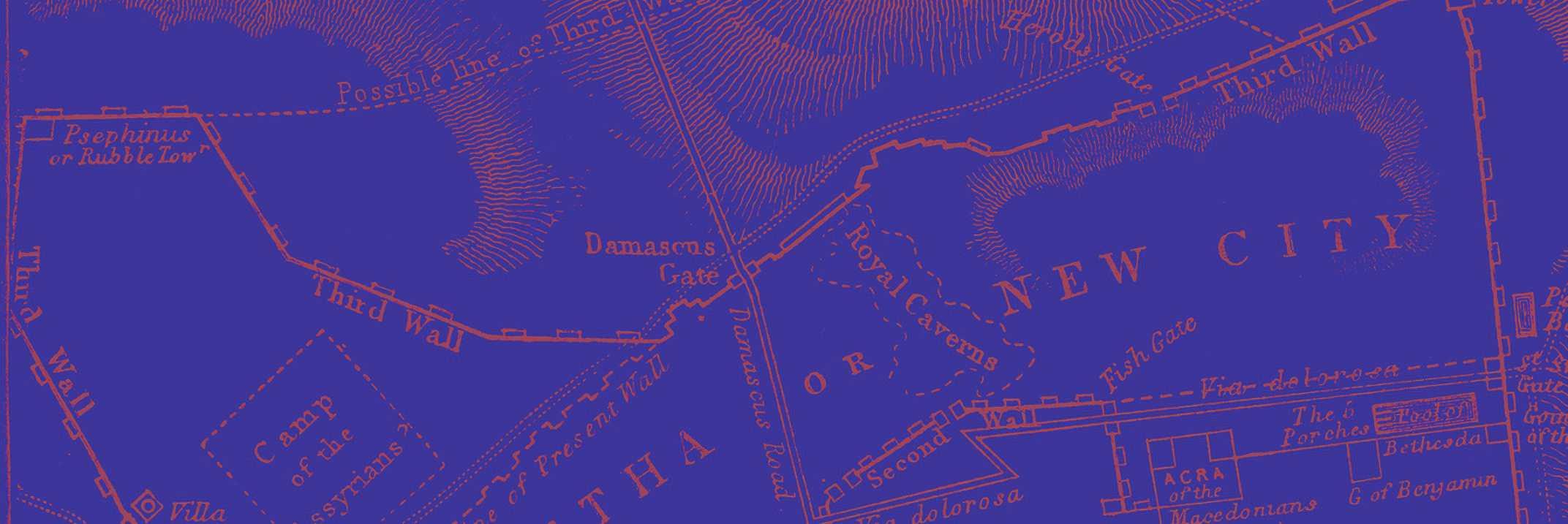
In our current environment I find two rather different ways of reading and searching the Scriptures. With a devotional reading of Scripture, hearing from God is the focus. In the academic study of Scripture, the focus is on understanding the text in relation to its historical context.1 These two approaches and their results are often posed antagonistically against each other. There are critical scholars who devalue the devotional reading of Scripture and the quest to hear the voice of the living God thereby. There are others who dismiss the academic study of these texts as inconsequential, since the Spirit is “all they need” to interpret the Scriptures. The former reduce the witness of Scripture to a basic, workable, rational morality that does not significantly interfere with the modern agenda. The latter privilege their potentially idiosyncratic and erroneous readings and applications with divine authority.2 As the reader will
1As J. J. Griesbach, one of the leading figures in nineteenthcentury Gospel studies put it, “the New Testament must be explained as every ancient book is explained” (quoted in William Baird, A History of New Testament Research, vol. 1, From Deism to Tübingen [Minneapolis: Fortress, 1992], 139).
2David L. Dungan has written a bold analysis of the ways in which the historical-critical study of the Bible arose as part of a movement to delegitimate the power of king and priest and to end religious interference in secular affairs. Historical criticism, he avers, served to reduce Scripture to a book that taught private morality, of no consequence to the political and economic spheres, which were now made safe for capitalism, democracy, and rationalism. Reflecting on his own work as a biblical scholar, he writes, “I never knew that I was a foot soldier in a great crusade to eviscerate the Bible’s core theology, smother its moral standards under an avalanche of hostile historical questions, and, at the end, shove it aside so that the new bourgeois could get on with the business at hand” (A History of the Synoptic Problem
quickly discern, I find neither position and neither result acceptable.
Both kinds of inquiry can and should work together in the community of faith. The academic study of the Scriptures can be used by people of faith as a means to allow the text to speak its own word on its own terms. But this avenue of inquiry is also best pursued prayerfully and in connection with the God who continues to speak through these texts. With these spiritual disciplines, the fruits of academic study are brought back into the conversation with God and with other Christians about what God would say to God’s people today through these texts. The critical study of the New Testament acknowledges the distance between the modern reader—in his or her cultural, political, theological, and economic setting—and the author and original readers of a New Testament text. The devotional use of the New Testament presumes the immediacy and accessibility of the Word for the worshiper. Pursuing both avenues of inquiry, allowing neither to overwhelm the other, bringing the results of each into vigorous interaction with the other, puts the Christian leader on the surest ground, enjoying the riches of both while being less liable to the limitations of either.
This introduction to the New Testament seeks to nurture this kind of integrated
[New York: Doubleday, 1999], 148). His book serves as a reminder that there are no neutral readings of Scripture and that every reading—whether devotional or critical— grows out of an agenda, legitimates real-life arrangements in this world, and is made possible only by a host of presuppositions about the way things “really” are.
approach to Scripture, attending both to the methods and results of the academic, critical study of the New Testament and to the ways in which these texts continue to speak a word from the Lord about discipleship, community, and ministry. My objectives in writing this book are to prepare Christian leaders to (1) more fully engage the critical and prayerful study of the New Testament and (2) more reliably discern the direction the Spirit would give through these texts for nurturing disciples and building communities of faith that reflect the heart and character of their Lord. These objectives have shaped this introduction in a number of ways.
First, I take a text-centered as opposed to phenomenon-centered approach. My focus remains on the texts that make up the New Testament (and, of course, on the situations envisioned by each text) rather than the broader phenomena behind the New Testament that belong properly to early church history and Christian origins. I am interested primarily in the context, production, and message of each text, in the pastoral challenges each addresses, and in the way each author brings the revelation of God in Christ to bear on those challenges. There is thus no attempt to reconstruct the Jesus of history, though I do, of course, introduce the working principles of that important scholarly pursuit. There is no discussion of the history of the expansion of the church from the “Q community” to Rome, except insofar as such topics have bearing on reading and understanding particular New Testament texts.
Second, I give a great deal of attention (probably a full tenth of the book) to a wide range of interpretative strategies that represent foundational skills in the scholarly study of the New Testament and that remain available and accessible for every student’s exploration of the text. These Exegetical Skill sections appear in every chapter on a New Testament text (twice in some chapters). I usually include an extensive example of the exegetical strategy at work in the
exploration of a particular passage and offer suggestions for further exercises and study. It is my hope that these sections will not only open up new strategies for reading but also enable readers to interact more critically with commentaries and other literature written about the text (including devotional literature and sectarian propaganda). The student is urged to employ a variety of these avenues of exploration when studying any particular passage in the New Testament. Each interpretative strategy is designed to answer particular questions or bring into focus certain kinds of data: only in conjunction with one another do they provide a meaningful basis for interpretation.
Third, my discussion of the message of each text, and more particularly my reflections on how the text contributes to ministry formation, gives this textbook a distinctive focus on the church (from the local congregation to the global family of God) and the work of ministry (from the general ministry of all Christians to a variety of professional ministries). The New Testament texts are formative and transformative, a facet that often goes unexplored in New Testament introductions. If academic study of these texts is to inform their prayerful and practical application, a New Testament introduction is precisely the place to begin forging that connection. Since I believe that hearing the text in its original pastoral context leads directly to the most fruitful explorations of how the text invites Christian leaders and workers in our age to enflesh its ideals anew, I close each chapter with a section on “ministry formation.” These sections are intended (1) to keep the reader mindful of the ways that careful study can connect with careful application (to close the gap between the two ends of the typical seminary curriculum, namely, biblical studies and practical theology) and (2) to stimulate thought and discussion about what I take to be the primary value and purpose of these texts—shaping faithful disciples, supportive communities of faith, and ministry to the world.
In the process of writing this introduction I have been continually reminded and often daunted by the fact that the study of the New Testament is a broad field with many questions and problems that despite centuries of critical study remain unanswered. I do not, therefore, pretend to write as an expert on every topic. Some chapters and sections will reflect decades of careful study, reflection, and prior writing on my part (e.g., the chapters on Hebrews, Revelation, and the cultural environment of the New Testament). Some sections reflect my own initial efforts to wrestle with issues I have encountered but only begun to engage seriously in the preparation and writing of this volume. The reader is therefore invited to wrestle alongside a fellow learner with these magnificent texts that have opened up hearts to God, nourished faith, and shaped lives for two millennia.
The present revised edition differs from the original edition in several important respects. My first goal was to bring the discussions of each chapter up to date with my current thinking, particularly where I have done further research and publication in specific areas or had cause to reexamine specific questions and my handling of them. Thus the chapter “The Four Gospels and the One Jesus,” several chapters on Paul and his letters, the chapters on Hebrews, the General Epistles, and Revelation, and material on rhetoric and on the archaeological context of the early churches have undergone considerable rethinking and rewriting. The entire text, however, has been examined for possible improvement. Bibliographies have been updated and expanded throughout, as have references to scholarship (e.g., in the footnotes). The photographic illustrations have been completely reconsidered and more purposefully selected. At the same time, I have been careful to retain those aspects that have made the text useful for those who have invited it into their classrooms (and who have my gratitude).
While the footnotes and bibliographies show those older and wiser students to whom
an author is indebted for intellectual support, it is the custom of authors to use a preface to acknowledge the many other people whose support, influence, insight, and love contribute equally, if not more, to the book. Dr. Daniel G. Reid of InterVarsity Press kindly received my proposal for this textbook prior to the year 2000, offered many helpful suggestions for making the book more useful for the audience it seeks to serve, and showed a great measure of patience with this laborer as I took a full year longer to complete the first edition of this book than we had originally agreed. We began conversations about a revised edition sometime in 2014, and the present volume benefited once again from his suggestions. I am profoundly grateful to Dan for his support in this and several other projects, and for his constant encouragement since I began my academic career.
Several readers made helpful comments after reading portions of the initial draft of this book, but pride of place must go to Dr. Paul N. Anderson of George Fox University for his generosity in providing many specific, detailed suggestions that have made this textbook stronger. The revised edition has benefited from hundreds of corrigenda collected by Dr. N. Clayton Croy and Mr. Jerry Boyd, the latter in the course of reading the book aloud for “Recordings for the Blind and Dyslexic,” as well as a number of students over the years who kindly forwarded corrections (thus also demonstrating that they had done the reading). Dr. David Sloan, a former student who always did the reading, made numerous and specific helpful suggestions regarding how I might refine the treatment of Q for this edition.
The majority of illustrations in the first edition were selected from the five thousand–plus pictures in the Pictorial Library of Bible Lands, a digital collection maintained by Mr. Todd Bolen, the remembrance of whose generosity continues to evoke gratitude. Since 2011 I have enjoyed several opportunities to travel to many sites and museums in Italy, Greece,
Turkey, and the Middle East, with the result that the majority of photographs in the present edition come from my own journeys. I am deeply thankful to Educational Opportunities Tours, and to its president and CEO, James Ridgway, for affording me several of these trips as a guest lecturer in their program. I am also grateful to the trustees and administration of Ashland Theological Seminary, whose support made other, independent explorations possible through study leaves and professional development funding. Carole Raddato kindly supplied four photos from her vast database (followinghadrianphotography.com) to make up what was lacking from my own travels.
Greek, Roman, and Judean coinage is of great value for displaying the ideology of the period, and I am particularly indebted to Numismatica Ars Classica (NAC AG, London) and Classical Numismatic Group, Inc. (Lancaster, PA) for their representatives’ kindness and generosity in allowing me to include many choice images from their archives. I would like to thank personally those who dealt patiently with my requests in various capacities both for the first and the revised editions: Mr. Victor England, Mr. Brad Nelson, Mrs. Dale Tatro, and Mr. Travis Markel of Classical Numismatic Group; Ms. Poppy Swann, Ms. Emma Dodd, and Ms. Kira Eisenach of Numismatic Ars Classica. I am also grateful to Dr. Robert Deutsch of the Archaeological Center in Jaffa and to the late Mr. Sandy Brenner of JerusalemCoins.com for providing images of museum-quality coins from their inventories and archives.
Several university libraries have also extended generous permission to include images of important papyri in the present edition, including the Papyrology Collection of the Graduate Library, the University of Michigan; the Rare Book, Manuscript and Special Collections Library, Duke University; and the Spurlock Museum, the University of Illinois Urbana-Champaign. I remember with special gratitude the late Dr. Traianos Gagos, former
archivist of papyrology and associate professor of papyrology and Greek at the University of Michigan, who granted me the original permission to use an image of the vitally important manuscript ��46 in his care. A number of illustrations come from the Flora Archaeological Center at Ashland Theological Seminary, and I thank Mr. Sam Renfroe, our university photographer, and Dr. Kenneth Walther, my nowemeritus colleague in New Testament and curator of the collection, for their assistance. I also wish to thank the late Mr. Bruce Ferrini for his assistance in acquiring several illustrations.
As in all such endeavors, I am grateful to the trustees, administration, and faculty of Ashland Theological Seminary for their ongoing encouragement and support of my research and writing. My wife, Donna Jean, and my sons, James Adrian, John Austin, and Justin Alexander, deserve my heartfelt thanks for their support during the writing of this, as of all, my books. They were witnesses to the many struggles I faced as I wrote the first edition as well as to the breakthroughs that make writing, in the end, worthwhile. I thank Donna Jean also for compiling the index of modern authors and for helping to compile the subject index both for the first and the revised edition.
Finally, I wish to thank my parents but, in this volume, especially my father, Dr. J. A. F. deSilva. He always pursued excellence in his intellect and in his professional achievements and set a fine example in this regard for me to follow. In my youth he always took the time to take me to the park on weekends and taught me the importance of always finding time to play with my own sons. He taught me that there are two sides to every argument, and he perhaps contributed more than anyone else to my awareness of ideology and rhetorical strategy in people, no less than in texts. It is with gratitude, respect, and love that I dedicated the first edition, retained here, to him.
USING THE “EXEGETICAL SKILL” SECTIONS

A primary goal of most courses in New Testament introduction is to cultivate facility in exegetical method. This book seeks to do the same by introducing the reader to a broad, representative sample of the skills that open up a rich, full exegesis of biblical texts. Most often the procedures and results of each skill are discussed not merely in theory but in connection with a specific New Testament passage, along with suggested exercises for developing the particular skill. In this way, the reader can learn about the method, see it in action, and practice its application.
Exegesis is not fully engaged simply by performing one or two of these methods; rather, the fruits of the application of a good number of these skills must be combined and integrated before the interpreter can truly claim to have mined the text and unearthed its message and significance. Interpreters therefore need a master plan for exegesis that will lead them to engage the text from a wide variety of angles and lenses. This is the goal of many books on exegetical method, the most popular of which, however, seem to me to be far too restrictive in their scope. That is, they tend to focus the interpreter on questions of historical setting, literary genre, grammar, and the meaning of words. All of these are important, to be sure, but they do not provide a multidimensional appreciation for the richness of the text.
The paradigm that I employ here is based on a master plan for exegesis called sociorhetorical interpretation, a model developed by Vernon K. Robbins.1 I have found this to be an
1
especially appropriate approach to exegesis for people involved in Christian ministry, since the goal of socio-rhetorical interpretation is to enter as fully as possible into how a text works to persuade its hearers at every level, using a great variety of resources, and to nurture and sustain Christian community in the face of the exigencies of a particular situation. It connects us with the ancient texts precisely in the manner in which modern Christian leaders, again in the face of the exigencies of particular situations, hear, interpret, and apply these texts to persuade others to deeper discipleship and to nurture and sustain meaningful and supportive relationships throughout the global Christian community.
Socio-rhetorical interpretation is not so much a new method (although the less familiar name might suggest this) as a model for analysis that encourages interpreters to make use of the full spectrum of established exegetical skills and to do so in a way that puts the results of each discrete avenue of investigation in conversation with the results of all the other methods. It is a model that invites careful study of the text at a number of levels: the interpreter
Socio-rhetorical Interpretation (Valley Forge, PA: Trinity Press International, 1996). Socio-rhetorical interpretation has advanced considerably since 1996. For a programmatic introduction to the current state of socio-rhetorical interpretation, see Vernon K. Robbins, The Invention of Christian Discourse, vol. 1 (Blandford Forum: Deo Press, 2009). For two recent examples of fully executed interpretations, see Roy R. Jeal, Exploring Philemon: Freedom, Brotherhood, and Partnership in the New Society (Atlanta: SBL Press, 2015); B. J. Oropeza, Exploring Second Corinthians: Death and Life, Hardship and Rivalry (Atlanta: SBL Press, 2016). I deliberately retain the framework of the 1996 iteration of socio-rhetorical interpretation for this volume as, in my opinion, the more helpful and accessible form for the beginning exegete.
(1) engages the text itself in detailed analysis, (2) examines the ways the text converses with other “texts” in its environment, (3) investigates the world that produced the text, and (4) analyzes how the text affects that same world. The image Robbins uses for the ancient texts is that of a tapestry—many threads are interwoven together in a text to produce multiple textures that together provide us with a rich, three-dimensional understanding of the meaning and impact of the text we are studying.
As we give close attention to the words on a page, we explore “inner texture,” the threads that the author has woven together to make a meaningful text. At this level we want to be sure we are as close as possible to the author’s original wording (textual criticism) and understand the meanings and connotations of the words that we are reading (word studies or lexical analysis; grammatical analysis). We pay careful attention to the way in which the passage derives meaning and significance from its relationship to the whole work of which it is a part, especially from neighboring passages and thematically connected passages (literary context). We examine the ways in which the repetition of words and phrases helps the hearer identify themes, discern emphases, and make correlations (repetitive texture). At this level we also give careful attention to the way in which a text persuades its readers or hearers to accept the values, behaviors, or decisions it promotes (rhetorical criticism). We also reflect on the way the text communicates and creates meaning as literature (narrative criticism) if appropriate, and consider ways other genrespecific signals can help us “hear” the text more authentically (interpreting parables; epistolary analysis).
A second level of analysis calls us to examine the conversations the author is creating with other texts, a phenomenon called “intertexture.” New Testament authors very often quote verses or incorporate lines from the Jewish Scriptures; they even more often allude to events, echo
phrases, and reconfigure the pattern of familiar stories from the Old Testament and Second Temple–period literature in the new texts they create. Early Christians also drank deeply from the streams of the Greco-Roman and Hellenistic Jewish traditions. What resources, then, does an author use? How does he incorporate, reshape, and reapply them? When the audience hears the older texts woven into the new text, what impact will the text have that the passage might not otherwise have made? How does an author’s perspective and purpose emerge through the study of changes made to a literary source (redaction analysis)? The fruitfulness of such investigations will be explored as we consider the use of comparative materials in New Testament exegesis and the analysis of intertexture at a variety of levels.
New Testament texts are not merely about words and conversations between texts, but they also enflesh the Word in very real, threedimensional social and cultural contexts. A third arena for exegesis, then, is social and cultural texture, which moves from the world of the text to the world of the author and audience. Every passage we study speaks out of and to a real historical situation that we must seek to recover, and each text represents that situation in a strategically shaped manner (discerning the situation behind a text). The text also has meaning for its hearers because the author shares and communicates within the same social and cultural matrix, into which we must fully enter if we want to hear the text as they did. Readers of this textbook are therefore given a thorough introduction to cultural-anthropological analysis of New Testament texts, first through explicit treatments of the cultural and social environment of the first century, and then through applications of these insights to the reading of specific texts. The practice and potential fruitfulness of each is highlighted in the context of a discussion of a particular Gospel (honor discourse in Matthew, purity and pollution in Mark, patronage and reciprocity in
Luke, and kinship in John), emerging again in discussions of other texts as appropriate.
Most New Testament texts, like modern sermons based on them, seek to influence history and social relationships as well. We will therefore explore how a passage orients its audience to the world of everyday life and how it seeks to shape their relationships and interactions with one another (social-scienti fic analysis). What kind of community does a text seek to nurture? What role do rituals and religious symbols play in shaping relationships within the group and relationships with (or boundaries against) those outside? What is the relationship between the symbols invoked in a text and the real-life behaviors an author wishes to promote?
Finally, we have to consider “ideological texture,” which recognizes that a text is not just a vehicle for ideas but rather a vehicle by which the author hopes to achieve a certain goal. What goal or goals drive the author? How does the author fashion the text to achieve this goal? This may involve changing the audience’s perception of their situation, alerting them to dangers that are going unperceived, or drawing stark alternatives in order to move the audience to choose more readily the course or stance the author promotes. Successful analysis of the author’s ideological strategy requires the integration of insights gleaned from exploring the other textures. Repetition of words and phrases, rhetorical analysis, use of other texts (intertexture), use of cultural and social scripts, and the rest each have the potential to advance the author’s agenda for the hearers in their situation. In this way we will unearth the ideology within the text.
As we probe ideological texture, however, we also need to look honestly and critically at the interests and agendas that have guided the interpretation of the text by scholars and by
religious and lay leaders, as well as our own ideological environment and agenda for interaction with the text. Cultural studies, postcolonial criticism, and feminist criticism have been of great value in raising our awareness of how biblical interpretation is a political and ideological act. As we explore our own ideology and biases more openly, we are freed to pursue self-critical interpretations, encounters with the text in which we step outside our own ideology and allow it to be critiqued by other interpreters and by the text itself. It is at this point that we are most powerfully confronted with the text as Word of God, interpreting us rather than the other way around.
An interpreter will not always use all the resources of socio-rhetorical interpretation when studying every passage. Some skills are more suited to one kind of text than to another. A full exegesis requires, however, that we engage each of the four textures when studying a text and to reflect on the interplay between these areas of investigation. How does repetition of words and phrases contribute to the persuasive strategy and advance the ideology of the author? What are the rhetorical contributions of the author’s invocation of other texts (such as the Jewish Scriptures or Jesus traditions)? How do the results of historical reconstruction of the situation and social-scientific analysis mutually inform each other and in turn inform rhetorical and ideological analysis? By pursuing such a thorough and integrated investigation of the text, our understanding of a passage of Scripture will be enriched by the full range of interpretive strategies. Our awareness of the richly textured manner in which the text spoke within and to its original context will provide a much more reliable and creative basis for hearing and proclaiming the word afresh—in a rich, multidimensional way—in a new context.
INDEX OF EXEGETICAL SKILLS BY AREA OF FOCUS
INNER TEXTURE: CLOSE STUDY OF THE TEXT ITSELF
Examining Literary Context (Mark), 197
Textual Criticism (Luke), 263
Interpreting Parables (Luke), 296
Rhetorical Criticism—Judicial Topics (Acts), 333
Narrative Criticism (John), 345
Rhetorical Criticism—Appeals to Ethos (Galatians), 444
Epistolary Analysis (Thessalonians), 465
Rhetorical Criticism—Deliberative, Epideictic, and Common Topics (Corinthians), 502
Rhetorical Criticism—The Functions of Parts of an Oration (Corinthians), 507
Word Studies and Lexical Analysis (Colossians and Ephesians), 624
Rhetorical Criticism—Appeals to the Emotions (Hebrews), 691
Exploring Argumentative Texture (1 Peter), 761
Identifying and Analyzing Repetitive Texture (Revelation), 808
INTERTEXTURE: THE TEXT IN CONVERSATION WITH OTHER “TEXTS”
Redaction Criticism (Matthew), 231
The Use of Comparative Material in New Testament Exegesis (Matthew), 241
The Analysis of Intertexture (1) (Hebrews), 709
The Analysis of Intertexture (2) (Jude and 2 Peter), 774
Redaction Analysis in Epistolary Literature (Jude and 2 Peter), 782
SOCIAL AND CULTURAL TEXTURE: THE INTERSECTION OF A TEXT AND ITS WORLD
Cultural Awareness (Gospels), 204, 249, 293, 379
Historical Criticism (Acts), 325
Social-Scientific Criticism—Orientation to the Larger World (John), 380
Social-Scientific Criticism—The Analysis of Ritual (Romans), 556
Discerning the Situation Behind a Text (Philippians), 575
Social-Scientific Criticism—Analyzing Worldview and Ethos (James), 736
IDEOLOGICAL TEXTURE: AGENDAS OF AUTHORS AND INTERPRETERS
Exploring Ideological Texture in a Text (Johannine Epistles), 401
Postcolonial Criticism and Cultural Studies (Philemon), 598 Feminist Biblical Criticism (Pastoral Epistles), 673
FOR FURTHER READING
Croy, N. Clayton. Prima Scriptura: An Introduction to New Testament Interpretation. Grand Rapids: Baker Academic, 2011.
Fee, Gordon. New Testament Exegesis: A Handbook for Students and Pastors. 3rd ed. Louisville: Westminster John Knox, 2002.
Gorman, Michael J. Elements of Biblical Exegesis: A Basic Guide for Students and Ministers. Rev. ed. Peabody, MA: Hendrickson, 2009.
Green, Joel B., ed. Hearing the New Testament: Strategies for Interpretation. 2nd ed. Grand Rapids: Eerdmans, 2010.
Hayes, John H., and Carl R. Holladay. Biblical Exegesis: A Beginner’s Handbook. 3rd ed. Louisville: Westminster John Knox, 2007.
McKenzie, Steven L., and Stephen R. Haynes, eds. To Each Its Own Meaning: An Introduction to Biblical Criticisms and Their Application. Rev. ed. Louisville: Westminster John Knox, 1999.
Tate, W. Randolph. Biblical Interpretation: An Integrated Approach. 3rd ed. Grand Rapids: Baker Academic, 2008.
THE NEW TESTAMENT AS PASTORAL RESPONSE
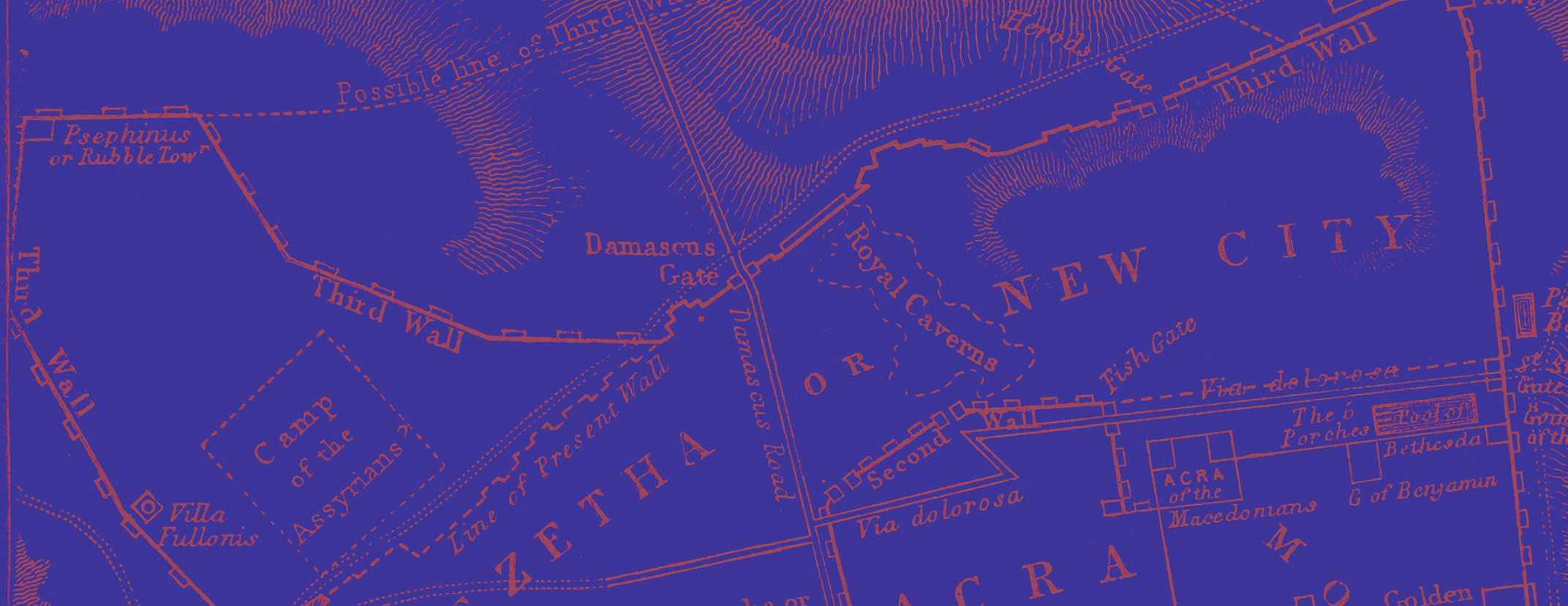
How did we get this collection of texts called the New Testament? To answer this question, we need to consider two distinct processes: first, the composition of each of the texts now included in the New Testament; second, the selection by the church of this group of texts to stand in a position of central importance and authority within the church as touchstones for faith and practice. Both processes can be understood in terms of response to pastoral exigencies. These texts would never have been written in the first place were it not for the kinds of concerns and challenges that early Christians faced. Each text was written to serve some specific pastoral needs and answer a range of important questions arising out of the life of the church. Because these texts answered those perennial questions so well, they continued to provide the basic point of reference for each successive generation of Christians in ever-widening circles from the texts’ places of origin. Faced with the same or new challenges, Christians kept turning to these texts to find guidance from the apostolic witness and, ultimately, from their Lord himself. Canonization was a long, natural, and largely consensual process by which the churches in every place throughout the Roman world came to recognize the indispensable value of these texts for their continuing life, nurture, and direction.1
1It must also be said that the process of arriving at consensus also determined the boundaries of the church. Thus Gnostic Christian and some Jewish-Christian movements
ISSUES IN THE FIRST-CENTURY CHURCH
A bishop sent a vibrant, innovative minister to a dwindling United Methodist congregation in a big city in the hope that she would build up the congregation. One of the less conventional moves she made was to rent advertising space on buses. The side of a bus featured her likeness, adorned in liturgical garb, with a Bible tucked prominently under her arm and a caption that read: “When our new minister came, she brought the manual.” The Scriptures of the Old and New Testaments function very much as the church’s “manual” or “handbook” (manual is derived from the Latin manus , meaning “hand”). These are the resources that give us our identity, vision, mission, and hope, and that orient us to our past, to the world around us, and to our future.
The early Christians, however, did not have access to such a manual. From the parent religion, they inherited the Jewish Scriptures (what Christians would come to call the Old Testament), which were foundational to the forging of the new group’s identity, but not in nearly the same way that they were for the synagogue. Gentile Christians were connected to these texts only on account of their connection with Jesus. Jewish Christians were wholly reoriented to their Scriptures by the same. Both were called together into one new
remained essentially separate entities as they clung to their own distinctive texts and the distinctive faith and practice these nurtured.
community by the preaching of the apostolic witnesses to what God was doing in Jesus. Access to the traditions about and sayings of Jesus—together with the direction and guidance of reliable apostolic voices—was therefore of critical (and one dare say primary) importance to the early church. These voices played the central role in shaping early Christian identity, community life, and response to the world, with the Hebrew Scriptures providing legitimation and grounding. This access and guidance came fi rsthand through leaders such as Paul, James, Peter, and John, and through those directly trained by them; only after letters and Gospels began to be written were texts available to fulfill the same purpose.
What kinds of questions and challenges would confront the people who joined the early Christian community? First, they would naturally want to learn more about the identity and focus of the movement, the teachings of the one they had come to call “Lord,” and the manner in which they should live out their lives as a community. They would be asking:
■ Who is this Jesus whose identity is to shape ours? What is his significance, and why does he deserve my complete loyalty and obedience?
■ What does it mean to follow Jesus? How should calling him “Lord” affect the way I live, the things I do or refrain from doing, the ambitions I pursue or decline to pursue, the way I use the things of the world, and so forth?
■ How is the scandal of the Messiah’s disgraceful execution to be understood as something positive, purposeful, and beneficial? What does the mystery of this crucified, risen, and returning Messiah tell us about our relationship with God and place in this world?
■ How can we be sure that we are indeed the heirs of God’s promises and a legitimate
phenomenon in the history of the one God’s dealings with humanity?
■ How are we to live together as this new “people of God”? What codes of conduct and values are to guide our interactions with one another? What qualities should be apparent in and what characteristics banished from this new community? (As might be expected, a great deal of the texts that would compose the New Testament address these questions.)
■ What should our worship look like? What are the distinctive rituals that set us apart and give us identity? How should they be performed and what is their significance? How are we to administer the life of the community?
■ When will our labors have their reward (e.g., when will Christ return)?
■ How are we to keep our hearts focused on God’s reward and not be distracted by the temporal ambitions that marked our pre-Christian lives and still mark the lives of our peers?
■ How can we discern the true prophet or reliable teacher from the deceiver? Where are the boundaries of this new faith and way of life?
Forming a new community, the early Christians also needed to come to terms with their relationship with other communities. A number of particularly pressing questions centered on the relationship of this new people of God to the historic people of God, the Jews. These questions were made more pressing by challenges from and actions performed by some Jews and Jewish Christians, as well as by the fact that the Christian group claimed the Jewish Scriptures as its own. This raised several prominent issues discussed at length in the early church:
■ What is the role of Torah—the law of God and the covenant it regulates—in the new people of God?
■ What is the place of Gentiles in the people of God? Must they become Jews first and enter by means of the signs and statutes of the Mosaic covenant?
■ If Jesus is the Messiah promised to the Jewish people and prophesied in their Scriptures, why have they responded so poorly?
■ What is the church’s relationship to the Jewish Scriptures and to the promises made to the particular nation Israel? Does the church exhibit continuity or discontinuity with Israel and the revealed plan of God?
Christians had to come to terms not only with questions of how to relate to the Jewish people and their heritage but also to non-Christian Gentile society (the Greco-Roman society). This was especially pressing for Gentile converts to Christianity, whose way of life radically changed simply by the move from a polytheistic, pluralistic approach to religion to the strict monotheism enjoined by the preachers of the gospel (see, e.g., 1 Thess 1:9-10). Pious expressions of devotion to the gods cradled all kinds of social gatherings, from the household to the business guild, from the private dinner to the civic festival. Refusing to join such rites would be regarded with puzzlement, suspicion, and eventually hostility. Moreover, the provinces were generally thriving under Roman imperial rule, and the continued stability of the empire and the order it ensured were highly desirable. Small wonder then that a growing movement that encouraged “impiety” (the avoidance of idolatry) and spoke of an imminent overthrow of the present order (the coming of the kingdom of God) should meet with resistance. Again, this led to a barrage of questions asked by Christians throughout the Roman world:
■ How do we make sense of the world’s hostility toward the work of God, the alleged good news, and the people of God?
■ If we are God’s children, why do we face shame and marginalization? How are we to maintain self-respect in the face of being held in dishonor (and often actively dishonored) by a great number of our neighbors?
■ When do we “live at peace with all people,” and when does accommodation become apostasy?
■ How should we relate to non-Christian family members? What effect does our commitment to obey Jesus have on our roles in the household?
■ How should we interpret what we see going on around us every day—our neighbors’ continued devotion to the traditional religions, Roman imperial presence and propaganda, the economics of empire and province—so we won’t be drawn back into the life we left behind?
Of course, other kinds of questions arose as well. The list could be multiplied. Every New Testament text—whether Gospel or history, epistle or apocalypse—emerged as a response to one or more such pastoral concerns, whether for the nurture of disciples in the faith, the putting out of “fires” in various congregations, the encouragement of faithful witness in the face of hostility, whatever the challenges happened to be. The Epistles and Revelation help us become aware of the range of concerns and issues that were being raised within the early church, but these reflect the very same concerns and issues that, in a different way, the Gospels also address. This awareness should help us read the Gospels not only at their face value (i.e., “lives” of Jesus) but also as texts that serve pastoral needs, showing the ways Jesus traditions were applied in the early church to real questions, debates, and issues. Moreover, as we become more aware of the kinds of questions these texts were written to answer, we also become more adept at discerning how
Another random document with no related content on Scribd:
Scrap. Packing and Cooling.
—After the lard is drawn from the cooking kettle, the scrap should be drawn from the bottom. This scrap is used in the prime steam lard tank. If, however, there is no other provision for handling the scrap, it should be put into a hoop press (Fig. 150), and pressure applied, thereby liberating all the oil left in the residue, the scrap then being used as “pressed scrap.”
—Kettle rendered lard is usually sold and used more extensively during the cooler weather. It is very desirable that there should be a light, fluffy top. This is only possible when the lard is drawn hot in a cool room; chilling the lard rapidly causes this appearance at the top, which is always looked upon by the trade as a mark of excellence. When the lard is drawn off into small packages they are placed one on top of the other, covering the top with paper. The cover should not be put on the package until it is chilled, otherwise the fluffy appearance is lost.
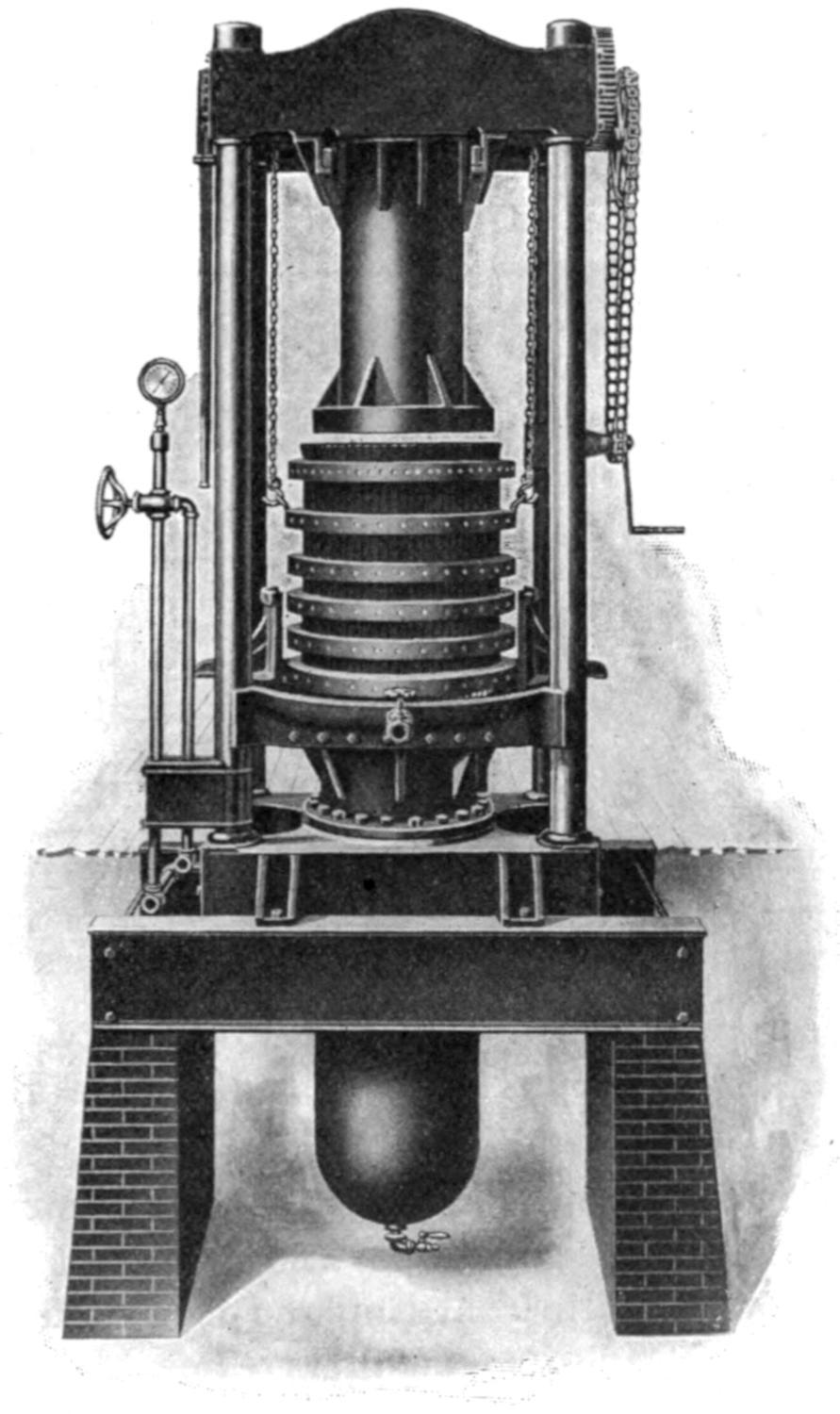
FIG. 150. HOOP PRESS.
Drawing Temperatures.
—When drawn into wooden packages, such as ten, twenty or fifty pound pails, lard should be drawn at 150° F. If drawn into tins it should be drawn off at 175° to 180° F.; when drawn into tierces, barrels or half barrels it should be drawn at about 130° F. When drawing lard into wooden packages they should be silicated the day before, giving them ample time to dry, as this prevents the packages from soaking up the lard and also prevents excessive shrinkage of the package.
Refining Prime Steam Lard.
—Refined prime steam lard is made into two products, pure refined lard and lard with beef fat added.
Pure Refined Lard.
—Pure refined lard consists of prime steam lard with lard stearine added. This is a product resulting when prime steam lard is pressed to obtain lard oil, a process described later; however, the quantity available is quite limited. Descriptions will be confined to the making of lard with beef fat added.
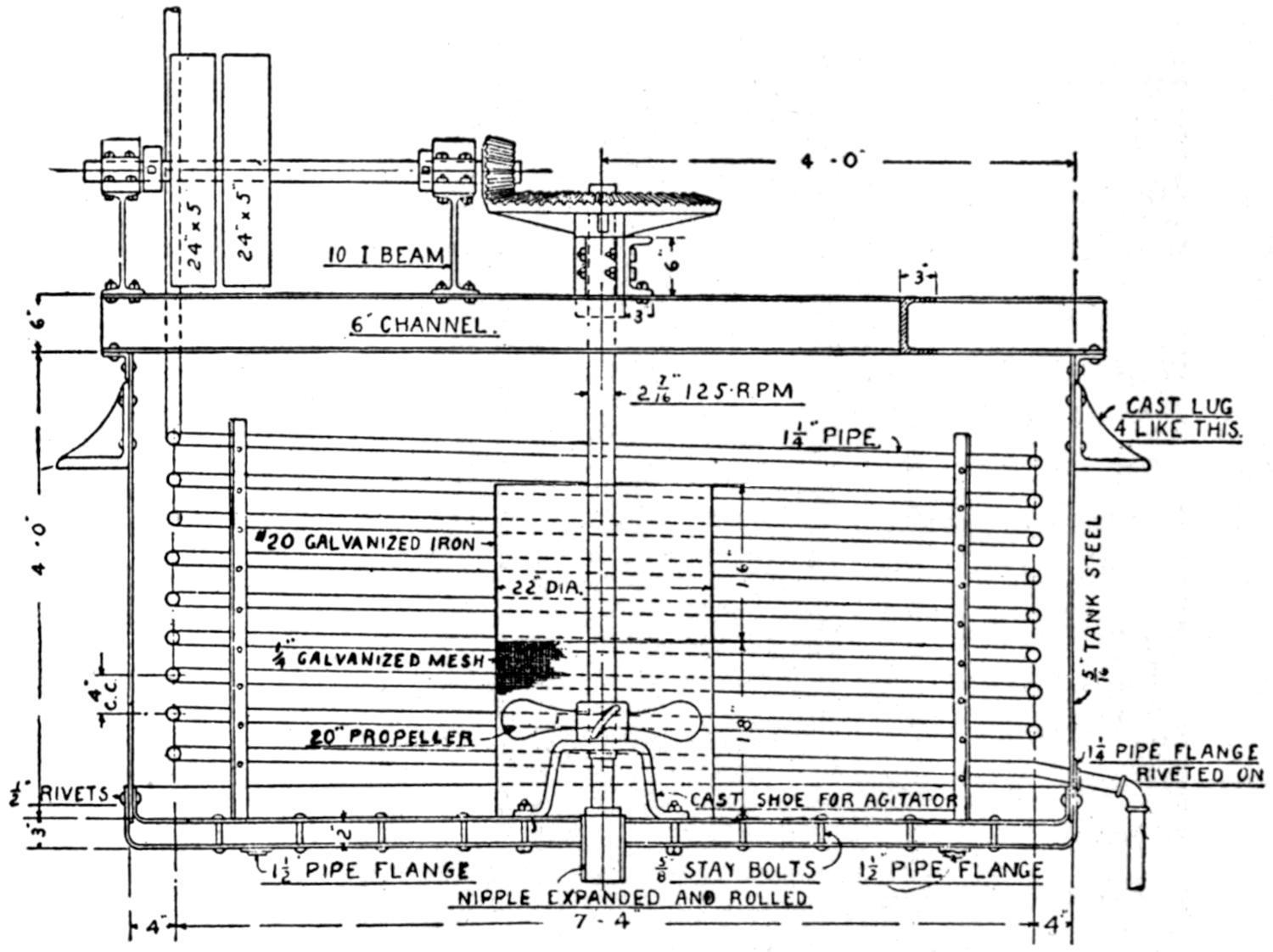
FIG 151 SECTION THROUGH TANK FOR MIXING FULLERS EARTH AND LARD
Fullers Earth.
—About thirty years ago the method of refining lard with fullers earth was first inaugurated, and for years only imported earth from England was thought suitable for this purpose. Deposits of fullers earth, of fair quality, have been discovered in the United States and American fullers earth is today used in some lard refineries. Indications are that with improvements in mining and methods of grinding, and possibly also in the discovery of better beds or layers of this substance, manufacturers will not continue to go abroad for supplies of fullers earth.
An explanation of how fullers earth bleaches lard and its kindred fats would be interesting, if anyone knew the exact explanation, but so far there has been no scientific reason given that accounts for this
property of this material, therefore no chemical test can be applied to different samples of fullers earth to determine whether they are suitable for refining or not. The only safe test is the practical one of heating a sample together with lard and watching the result of the bleach.
Fullers earth is used for bleaching cotton seed oil and other greases and fats which are subjected to the bleaching process. In improving the color of lard it is done at the expense of flavor, and a wholesome odor, which is natural to the lard, is sacrificed in a greater or lesser degree to the advantage of color The tendency is to make lard white, even though it loses in odor and taste. In compounding lard this is intensified by the general use of tallow.
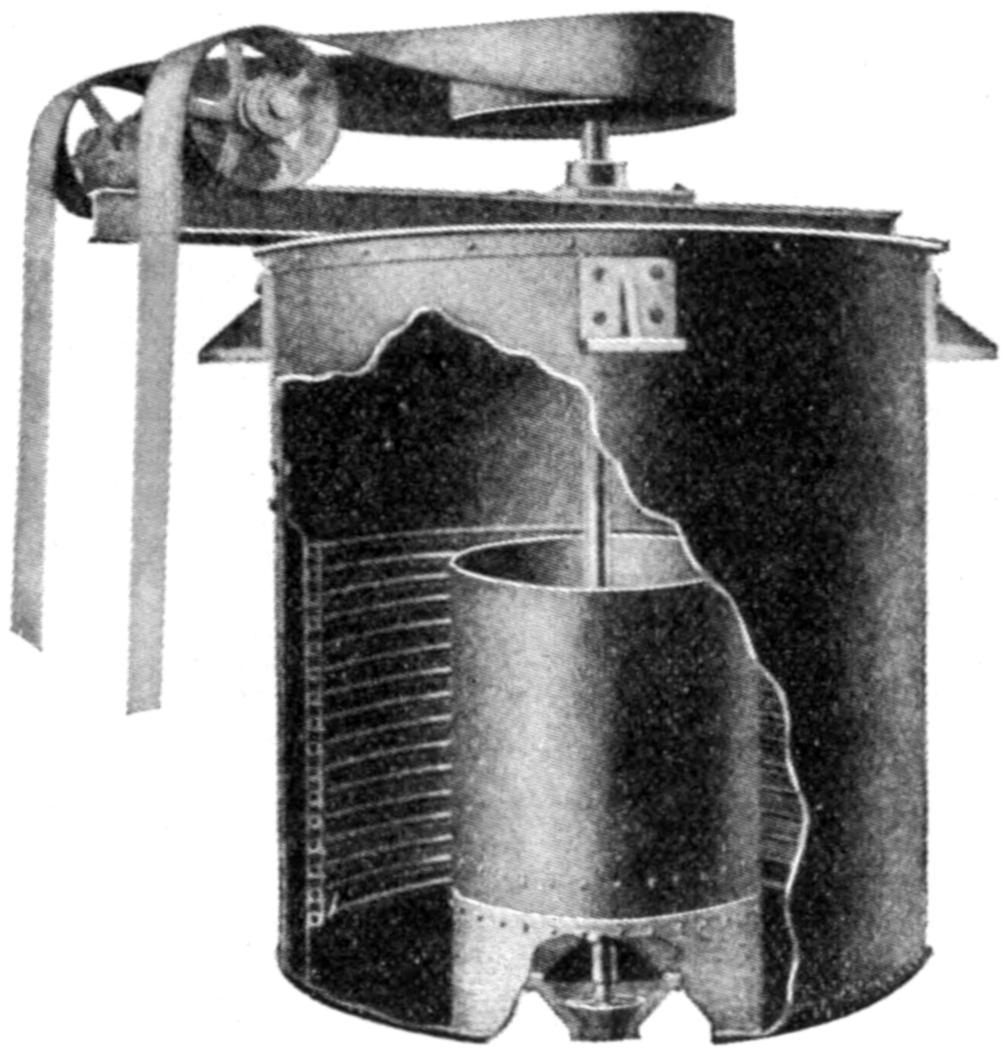
Bleaching Kettle. FIG 152 FULLERS EARTH KETTLE FOR SMALL HOUSES
—This can be of a predominant size dependent upon the volume of business. For a moderate business the most suitable dimensions are about six feet in diameter and four feet deep. A sectional view of such a kettle is shown in Fig. 151 and a smaller kettle is illustrated in Fig. 152. It was the practice to use compressed air for agitation so as to mix the fullers earth with the
lard. This has been discontinued in the best refineries, as it was found that agitation with air had a tendency to make the lard turn rancid more readily than if agitated by mechanical device.
The kettle is supplied with a vertical shaft, to the bottom of which is attached a propellor about fourteen inches in diameter. Around this is fitted a wire screen about thirty inches high made of galvanized wire, ³⁄₁₆-inch mesh, this screen clearing the blades of the fan about an inch. On top of this screen is fixed an iron pipe approaching to within about eighteen inches of the surface of the lard when the kettle is filled. A kettle of this size will hold about 5,000 pounds of lard for treatment. The agitating blade should revolve at a speed of from 125 to 175 revolutions per minute. This has the effect of producing a miniature whirlpool in the body of lard by driving the lard through the screen against the sides of the kettle, where it rises to the surface and goes down through the funnel-shaped tube to be again driven through the screen. In this way the fullers earth is thoroughly mixed in and if there is a tendency to “lump” the lumps are readily broken up by impact.
Bleaching Lard.
—If cold lard is used it should be melted and any sediment or moisture which settles should be drawn off. It is best not to draw off too close to the bottom so as to avoid any moisture. The temperature at which lard should be bleached is an important matter to be determined. If the lard has been heavily cooked and has a strong steam flavor, a temperature of 180° F. is correct. If the lard has not been well cooked a somewhat lower temperature is necessary. As a rule the lower the temperature at which bleaching is done, the more fullers earth is required to get the proper bleach and at the same time as little earth flavor as possible is a point for careful and intelligent consideration. The best way to determine, where there are large quantities of lard, is to take a small sample and make tests in the laboratory. The point to be obtained is to get the bleach with as little of the flavor of the earth as possible. Generally speaking, from three-fourths to one and one-half per cent of fullers earth will get the desired result.
When the lard is brought to the proper temperature, fullers earth is put in the kettle, when it is agitated from eight to twelve minutes, then pumped through the filter press as rapidly as possible. It takes a
certain length of time for fullers earth to do its work properly, and a strong agitation of from eight to twelve minutes appears to be the best method to adopt in order to obtain the full effect of the earth.
Refining Tallow Separately.
—Where tallow is used in lard, it is always advisable to bleach the tallow separately. This is done in the same manner as described for lard, with the exception that about three per cent of fullers earth is used, after which it is pumped through the filter press and into the receiving tanks.
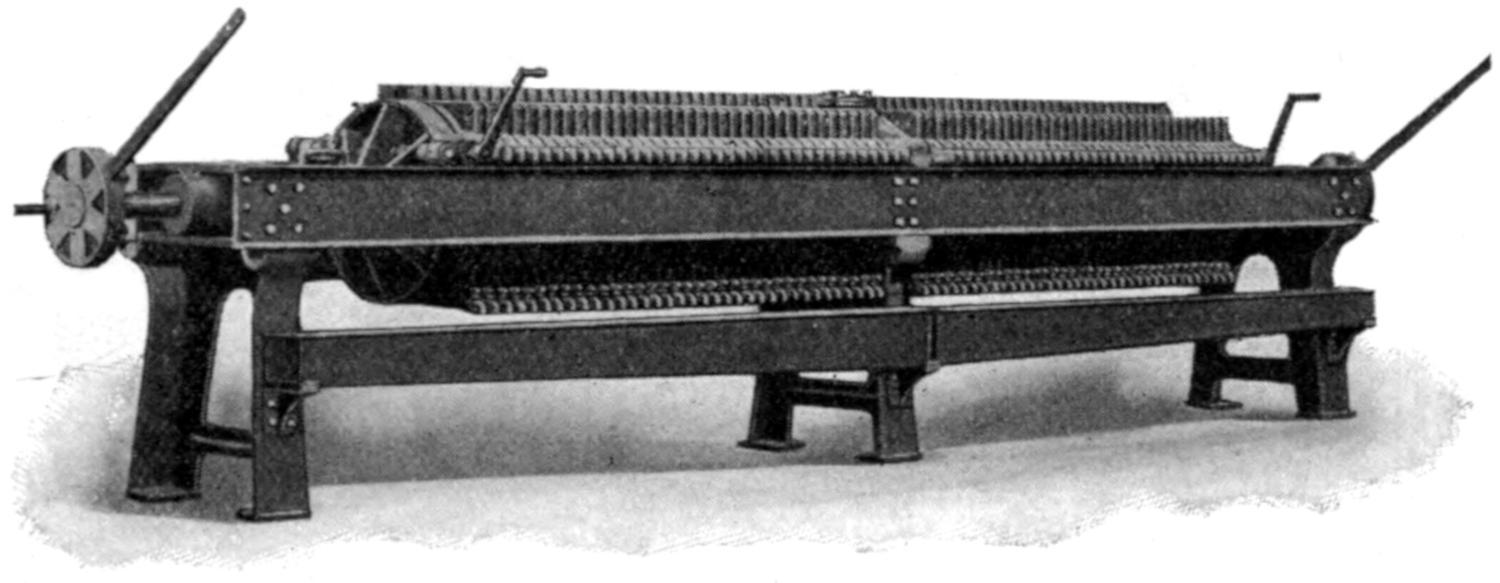
When it is compounded with the lard, the desired amount should be put into the kettle with the lard after it is treated. The same is true of oleo-stearine, except that in the bleaching of this article from onehalf to one and one-half per cent of fuller earth is sufficient. Measures must be taken to see that ingredients are intimately mixed before passing the product to the rolls.
The use of tallow or stearine is for the purpose of cheapening the product, as well as hardening it, the formula for same being made according to the values and conditions under which the lard is to be sold. For instance lard going south, or into a warm climate, is made much harder than lard for a temperate climate; hence lard formulas, generally speaking, are worthless for general use, the different formulas being made to suit widely different conditions, and their availability also depends to a considerable extent upon the fluctuation of values.
Filter Press.
—After the contents of the kettle have been pumped through the filter air pressure should be turned into the filter press in order to blow out all the lard possible. After this live steam should be turned on, expelling the balance of the lard from the pipe. A large portion of this latter lard, however, is unfit to be used again, as it contains sediment and fullers earth combined, having a rank, strong odor, and can be used only for grease.
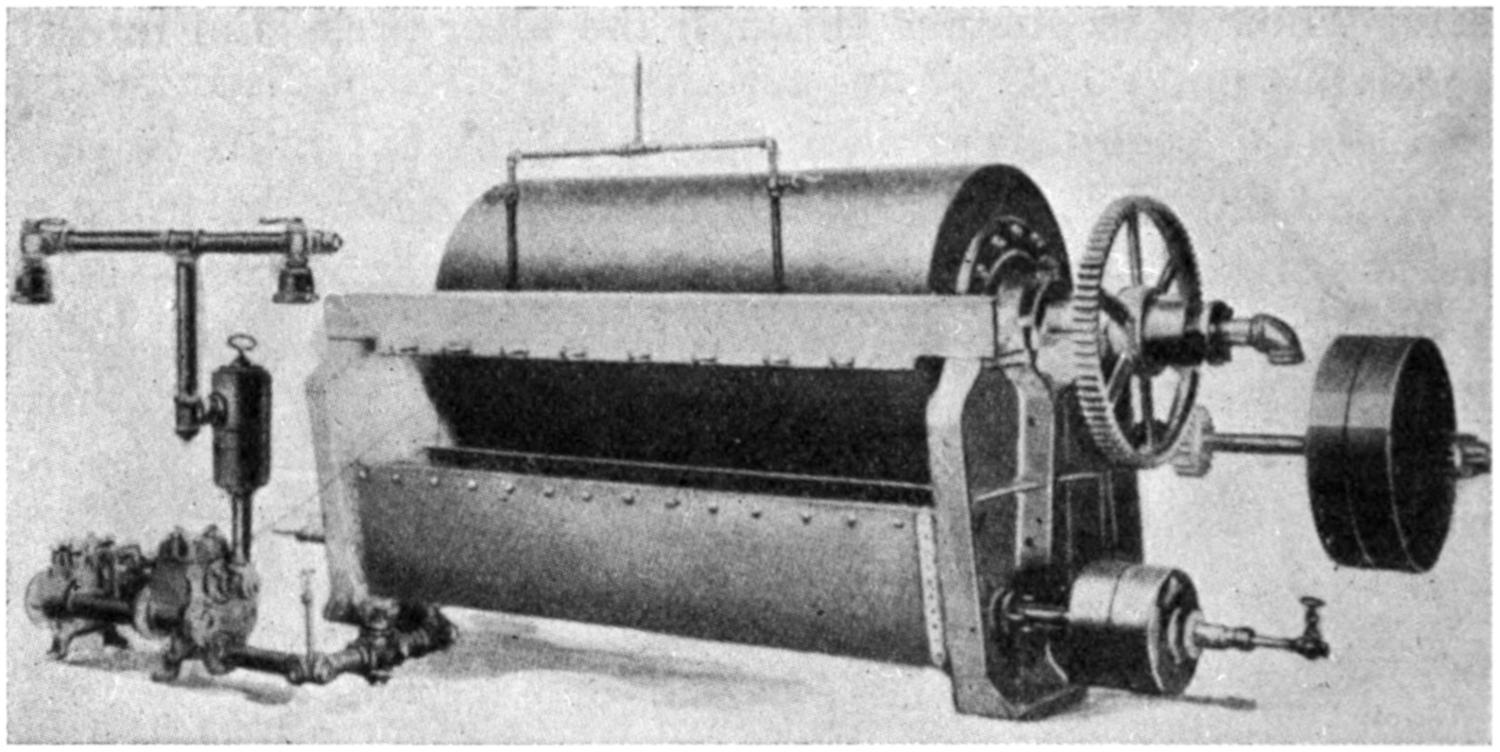
Lard Roll.
—This is a device provided for cooling lard in a film so as to bring plenty of air in contact with the surface during the congealing. After the lard has been put through the filtering press it goes to a receiving tank and is next passed over rollers for chilling. (Fig. 154.) These are cast iron cylinders containing refrigerated brine. The cylinders revolve at from ten to fourteen revolutions per minute, the lard being congealed on the outer surface. Fixed against the side of the cylinder is the edge of a steel knife which scrapes close to its surface. The lard, in contact with the cool surface of the cylinders, congeals and as it passes to the knife it is removed and drops into the trough. Here it is thoroughly beaten by a revolving shaft with pickers on it, so that all lumps are broken and the grain is
of a smooth, even consistency Pure lard passes to an agitator, which is a jacketed kettle, where it is given a thorough agitation and drawn off cool as possible, the object being to have the different ingredients thoroughly mixed at a low temperature. At times rolls are used in tandem. When a bountiful supply of cold water, say at 60° F., is available, the saving in refrigeration justifies the use of tandem rolls. In this instance the first roll is elevated so as to gravitate the lard to the feed of the second.
WEIGHT OF LARD PACKAGES.
3-POUND
5-POUND PAILS:
10-POUND PAILS:
20-POUND PAILS:
40-POUND SQUARE CANS:
100 cans 268 lbs., 8 oz. 42.96 oz.
100 caps 2 lbs , 8 oz 40 oz
Average weight each 43 36 oz
50-POUND ROUND CANS:
100 cans 270 lbs , 10 oz 43 30 oz
100 covers 50 lbs , 2 oz 8 02 oz
100 summer covers 38 lbs , 12 oz 6 20 oz
Average weight each ... 57.52 oz.
Lard Packing.
—Refined lard is not usually drawn in a cooler. In most climates the non-refrigerated rooms will suffice. It is packed in tubs, barrels or tierces of wood. The lard, when available, in the picker trough, is usually chilled and stiff. The use of a pump is made to withdraw and force it through a strainer in an enlarged section of the pipe, so as to effectually break all lumps. A relief valve should be placed on the line to spill into the picker in case the draw cocks are all suddenly closed.
Lard Packages.
—In wooden packages tare is deducted. The table on preceding page shows the actual weight of the different packages which are usually made from an X L grade of tin. Inasmuch as lard sells at more per pound than the tin costs, there is always an endeavor to get the packages as heavy as consistent.
Country Style Lard.
—Many moderate sized plants that do not cater to a trade accustomed to highly refined lard, prefer to make kettle rendered lard as most of their output, using leaf, back fat and trimmings, adding the complimentary proportion of killing lard and agitating the whole in a water jacketed agitator. All implements used are similar to those described previously, also the method of drawing from the agitator to packages is the same. Beef fat can be rendered in the same way when oleo departments are not operated, and it can thus be used to good advantage.
Compound—What it is.
—Compound is a substitute for lard and is made of cotton seed oil and oleo stearine, or tallow, or both. The formula on this article varies according to the relative values of the
ingredients. The generally accepted formula is 80 per cent cotton seed oil, and 20 per cent oleo stearine. If the market price of oleo stearine is high, a formula may be substituted as follows: 75 per cent cotton seed oil, 7¹⁄₂ percent tallow, 17¹⁄₂ per cent oleo stearine. In cold weather even a smaller amount of stearine may be used and a proportionately larger amount of tallow.
Cottonseed
Oil.
—This is a product derived from cotton seed. Before the manufacture of cotton seed oil, the cotton seed, removed from the cotton, was thrown in large compost heaps and after decomposition, was used sparingly as a fertilizer. An idea of its value may be gained from the following table. From one ton of seed, by average, is obtained:
270 pounds or 36 gallons of oil at 28c per gallon $10 08
750 pounds cotton seed meal at 90c per 100 pounds 6 75 850 pounds hulls at 15c per 100 pounds
100 pounds waste and dirt
The oil when extracted from the seed is termed “crude oil.” In refining this oil the loss varies from 7 per cent to 12 per cent, on an average about 9¹⁄₄ per cent.
Refining Crude Oil.
—The crude oil is purchased by refiners and treated to produce “yellow oil.” In this process it is put into a tank (it is generally considered profitable to refine cotton seed oil only in large quantities) supplied with a revolving agitator. Into the tank is put a solution of eighteen to twenty per cent caustic soda. The quantity and strength of the solution necessary is determined by treating a small sample. To a small sample of oil add the soda solution, stirring continuously, having it heated to a temperature of 160° to 180° F. When sufficient soda lye has been added a floculent precipitation will be noticed. This indicates a “breaking” of the oil. By calculation of the relative amount the comparative quantities can be arrived at.
An excessive amount of lye will saponify its equivalent in good oil, therefore care must be exercised to see that only the proper amount is used. In a practical way the soda is introduced in the crude oil solution and agitation is started to insure the thorough mixing of the caustic soda and the oil. The floculent substance appearing, the agitation is stopped and the oil allowed to settle, the sediment and substance other than oil collecting at the bottom of the tank. A small quantity (about one-quarter of one per cent by weight) of fullers earth is added and the oil removed by pumping through a filter press producing what is known to the trade as “yellow oil.”
The sediment, known as “foots” is collected in kettles and treated with additional lye, boiled and settled with salt; water added, settled and drawn. This treatment is duplicated as many times as necessary, until the soap stock will separate from impurities. When thoroughly settled draw the soap stock into packages for the soap trade. The finished “foots” contains about 33 to 40 per cent of moisture and a small percentage of lye.
Deodorizing Cotton Seed Oil.
—The “yellow oil” of trade has a decided flavor which it is desirable to remove, and this process is accomplished by deodorizing. (See Fig. 155.)
Treating Tank.
—This tank is equipped for heating the oil to a very high temperature by the introduction of a large coil surface, preferably rings, one within the other and arranged so that each ring is accessible. The kettle coils, etc., should be made extra heavy. The top of the kettle must also be hooded and as the oil boils violently the steam must be given free opportunity to escape. The escape pipe should be at least sixteen to twenty inches in diameter in a tank six feet in diameter, and should be provided with a goose neck, so that the steam rising which condenses, does not drip back into the tank. Fig. 155 show the construction of an oil treating tank.
The exhaust pipe extends into the atmosphere a short distance above the deodorizing tanks. On account of the extreme agitation caused by the heat, the oil is likely to boil over and waste. Special attention is called to the crook or neck in the exhaust pipe with twoinch outlet at the lowest point. This is done so that the condensation will not run back into the oil, but can be taken out at this point.
Process For Oil.—The tank is filled with oil to about half its capacity. The oil is then heated to a temperature of 320° to 360° F. After being held at this temperature for an hour to an hour and a half, it is ready for the washing process. This is done by means of a two-inch perforated pipe at the top of the kettle, through which is sprinkled cold water on the oil. The extreme temperature evaporates the water very rapidly and at the same time causes a precipitation. The water should be allowed to run for five minutes, and then the body of oil should stand for from one to two hours. The cone, or bottom of the kettle, will be found to have a sediment which has been precipitated from the oil. This “bottom” should be drawn off, and the steam again turned on the coils.
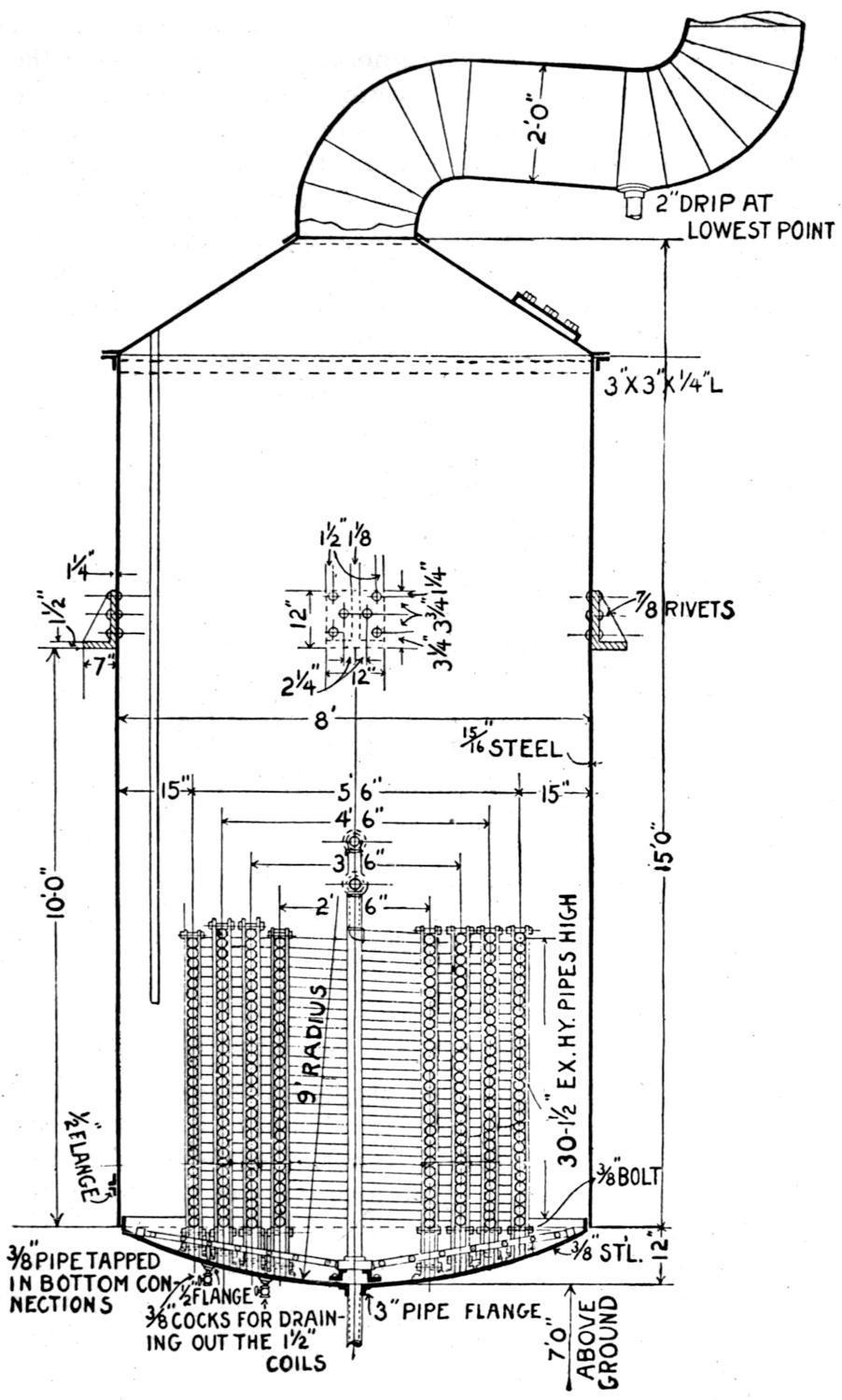
FIG. 155. DEODORIZING TANK FOR COTTON SEED OILS.
Blowing.
—The oil is heated to the original temperature and steam of high pressure and temperature introduced into the body of the oil. The length of time required for treating the oil depends largely upon its nature, some oils being more neutral and more nearly odorless than others, consequently no exact rule can be laid down that would fit all cases; it must be left to the judgment of the person handling the oil.
Pressure and Temperature.
—To obtain the temperature above mentioned a pressure of 150 pounds should be carried, and late practice introduces a superheater for reheating the steam to insure high temperature by adding 100° to 150° F. to the steam temperature.
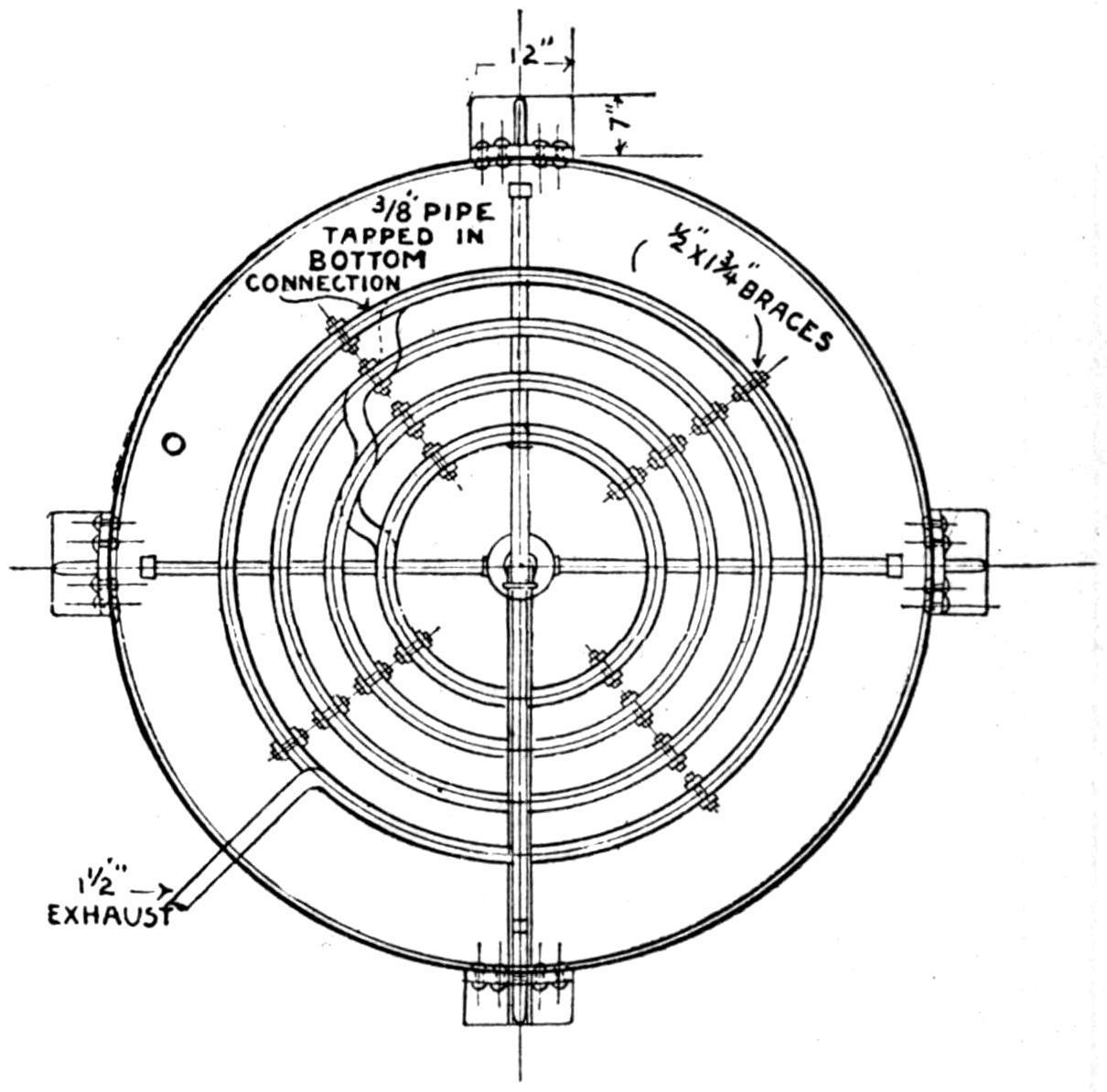
Bleaching Process. FIG. 156. SECTION OF BOTTOM OF DEODORIZING TANK.
—As soon as the oil is deodorized it is drawn off and allowed to cool. It is pumped into the treating kettle, or what is known in refineries as the “dirt” kettle. There it is brought up to a temperature of 160° F., when the fullers earth is added, generally using from one to two percent of earth with this bleach, following an agitation of about ten minutes. It should then be pumped through the filter press into the receiving tank, where it is held until used. After
going through this process the oil is known to the trade as “water white.”
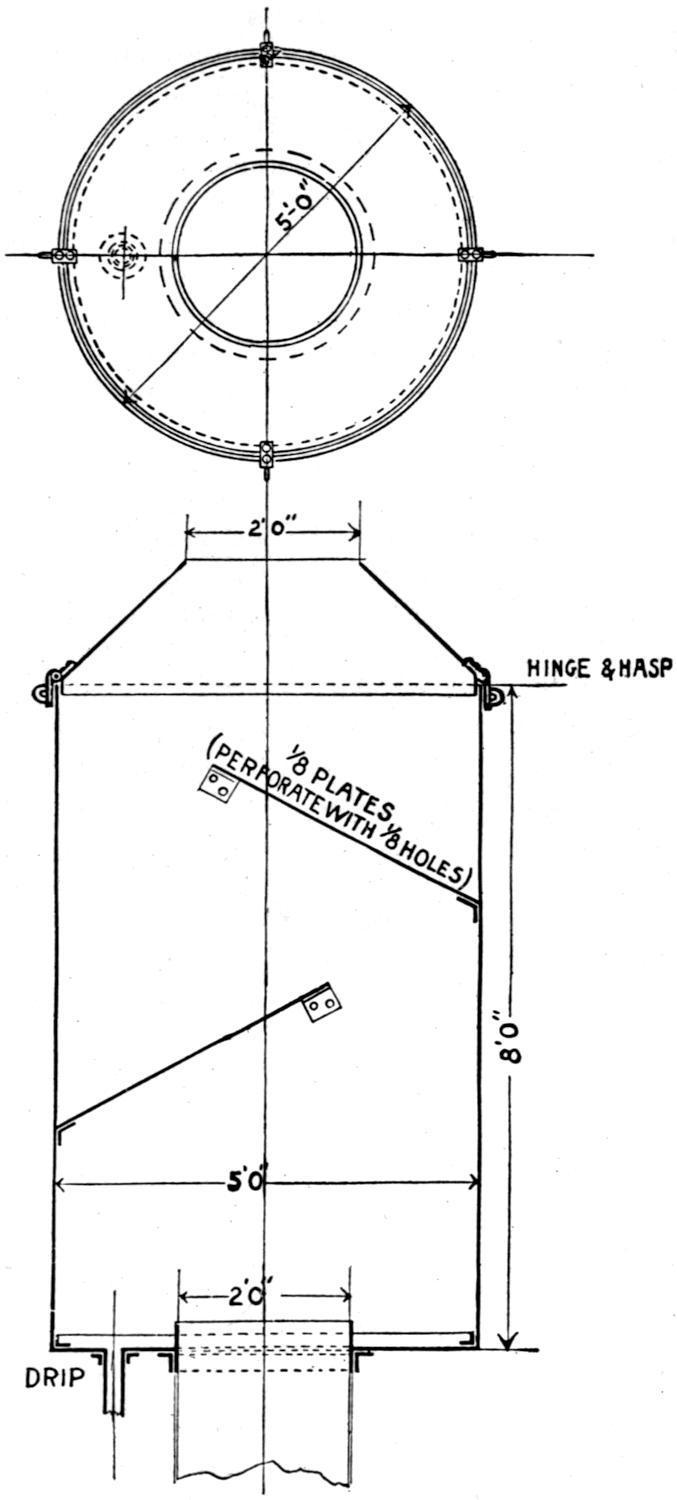
FIG. 157. SECTION THROUGH EXHAUST HOOD OF DEODORIZING TANK.
Mixing.
—Refined tallow or oleo stearine melted and clarified by pumping through a filter press without the use of fullers earth is added to the cotton seed oil so prepared, and the mixed substance, containing proportions previously described, are ready for passing over the cooling roll.
Filter Press.
—The filter press (Fig. 158) should not be used more than two or three times until it is taken apart, all the sediment and dirt removed and clean cloths substituted. Continued use of filter cloths, without proper cleaning, has a deteriorating effect upon the material pumped through the presses, and different kinds of products should not be passed through the same press.
Color and Roll Treatment.
—Color is an important feature of compound, when an odorless oil has been produced. The mixture passed to the rolls is usually at a temperature of 120° F. and this heated body of material amounting to 4000 pounds per hour on an eight foot roll requires a very large capacity of refrigerating equipment.
It is desirable to maintain a brine temperature in the shell of from zero to five degrees above. A fifty-ton refrigerating equipment of commercial rating is inadequate for this duty. Consequently compound manufacturers must have ample refrigerating machine capacity
The lard roll is preferably of the size noted and should operate at not to exceed seven revolutions per minute, provided brine of the above temperature is supplied; fewer revolutions if temperature is higher, which naturally reduces the capacity.
The lard roll, pump, and strainer equipment is the same as described for lard, except that the lard is packed directly from the picker trough without the use of an additional agitator.
Hydrogenation of Oils.
—A new process has been devised whereby soft oils, such as cotton seed oil, can be hardened so as to
